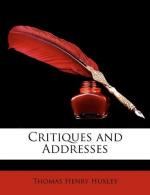Another considerable innovation is the proposition to divide the class Pisces into the four groups of Leptocardia, Cyclostomata, Pisces, and Dipneusta. As regards the establishment of a separate class for the Lancelet (Amphioxus), I think there can be little doubt of the propriety of so doing, inasmuch as it is far more different from all other fishes than they are from one another. And there is much to be said in favour of the same promotion of the Cyclostomata, or Lampreys and Hags. But considering the close relation of the Mudfish with the Ganoidei, and the wide differences between the Elasmobranchii and the Teleostei, I greatly doubt the propriety of separating the Dipneusta, as a class, from the other Pisces.
Professor Haeckel proposes to break up the vertebrate sub-kingdom, first, into the two provinces of Leptocardia and Pachycardia; Amphioxus being in the former, and all other vertebrates in the latter division. The Pachycardia are then divided into Monorhina, which contains the Cyclostome fishes, distinguished by their single nasal aperture; and Amphirhina, comprising the other Vertebrata, which have two nasal apertures. These are further subdivided into Anamnia (Pisces, Dipneusta, Amphibia) and Amniota (Reptilia, Aves, Mammalia). This classification undoubtedly expresses many of the most important facts in vertebrate structure in a clear and compendious way; whether it is the best that can he adopted remains to be seen.
With much reason the Lemurs are removed altogether from the Primates, under the name of Prosimiae. But I am surprised to find the Sirenia left in one group with the Cetacea, and the Plesiosauria with the Ichthyosauria; the ordinal distinctness of these having, to my mind, been long since fully established.
V. In Professor Haeckel’s speculations on Phylogeny, or the genealogy of animal forms, there is much that is profoundly interesting, and his suggestions are always supported by sound knowledge and great ingenuity. Whether one agrees or disagrees with him, one feels that he has forced the mind into lines of thought in which it is more profitable to go wrong than to stand still.
To put his views into a few words, he conceives that all forms of life originally commenced as Monera, or simple particles of protoplasm; and that these Monera originated from not-living matter. Some of the Monera acquired tendencies towards the Protistic, others towards the Vegetal, and others towards the Animal modes of life. The last became animal Monera. Some of the animal Monera acquired a nucleus, and became amoeba-like creatures; and, out of certain of these, ciliated infusorium-like animals were developed. These became modified into two stirpes: A, that of the worms; and B, that of the sponges. The latter by progressive modification gave rise to all the Coelenterata; the former to all other animals. But A soon broke up into two principal stirpes, of which one, a, became the root of the Annelida, Echinodermata, and Arthropoda, while the other, b, gave rise to the Polyzoa and Ascidioida, and produced the two remaining stirpes of the Vertebrata and the Mollusca.




